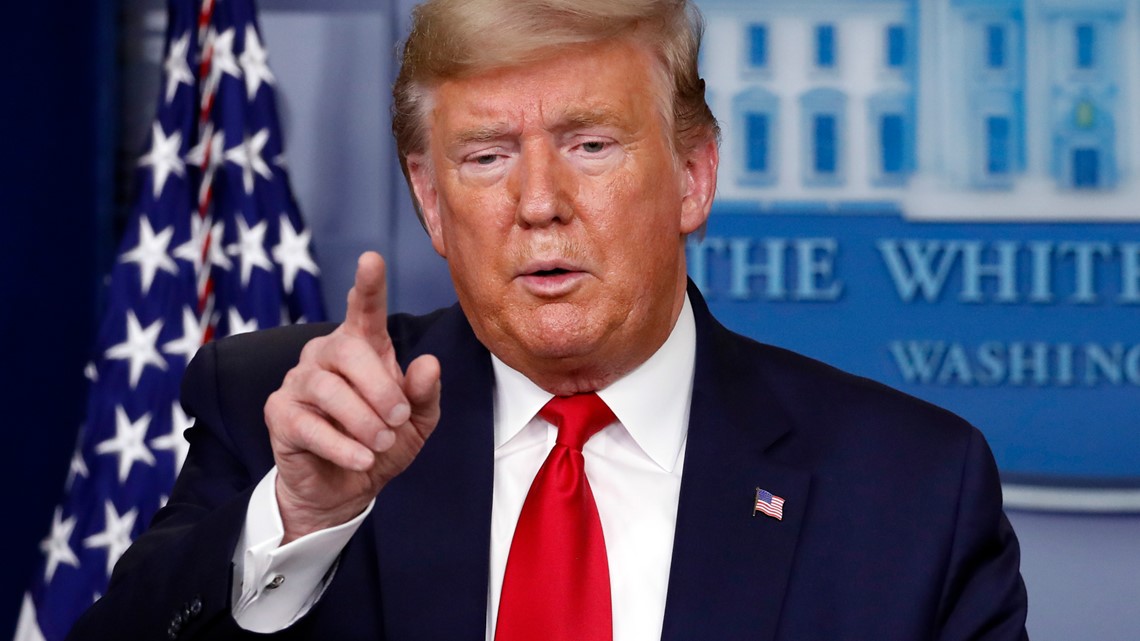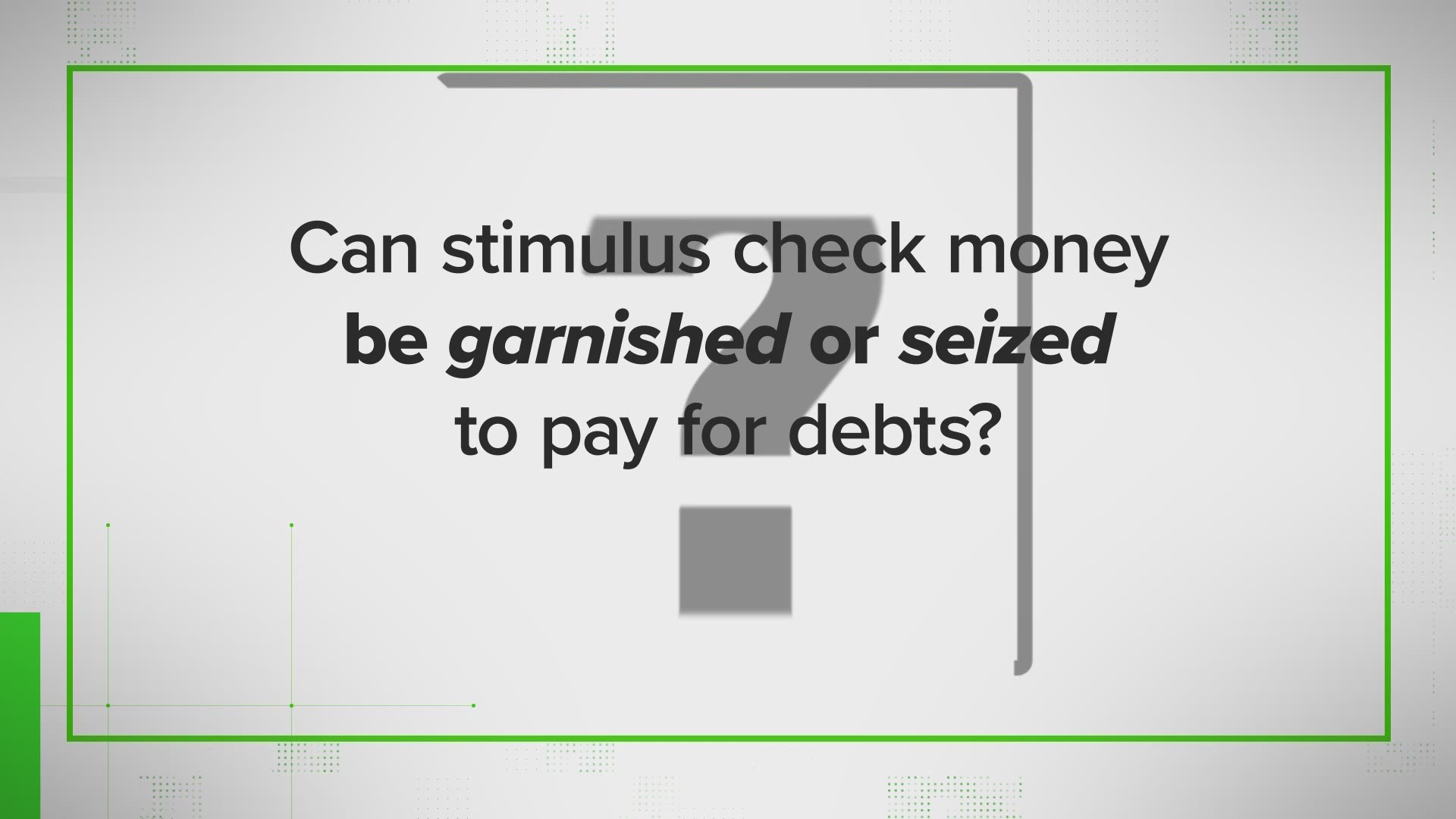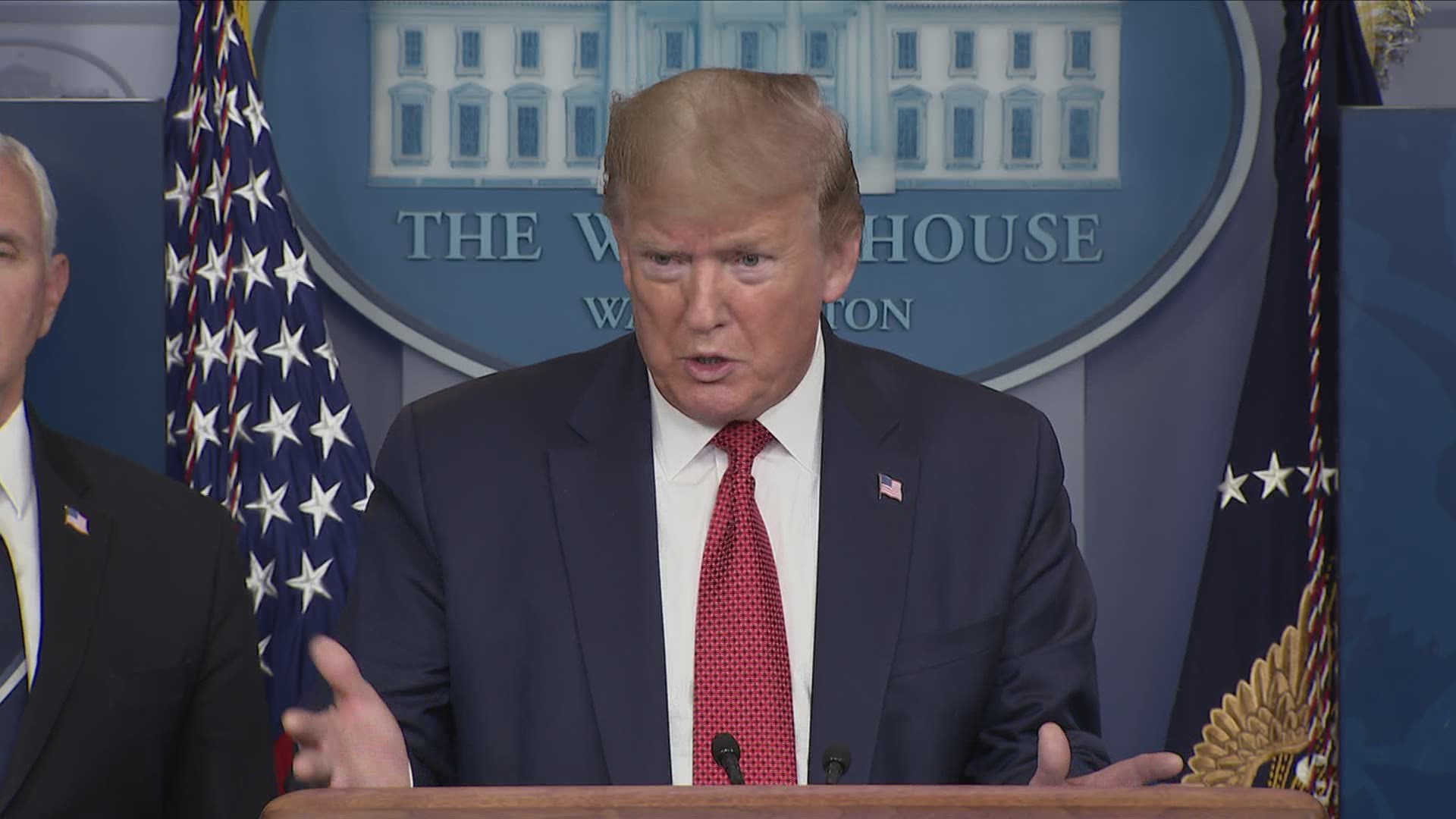Debate erupted over the powers of the president versus the states earlier this week.
President Donald Trump tweeted at the beginning of the week that it was the decision of the president and the federal government to “open up the states.”
Soon after, the Tenth Amendment was trending as people used the Constitution to argue against that authority.
What actually is the case? Well, there isn’t one positively clear answer. However, the law as it stands right now favors the states.
THE QUESTION
Can the president force states to end their stay-at-home orders?
THE ANSWER
It’s open for interpretation, however it would be an uphill battle for the president. Ultimately, states can choose whether or not to follow federal orders.
WHAT WE FOUND
The VERIFY team spoke with Rick Su, professor of law at the University of North Carolina School of Law. In explaining the legal precedent for this, he says there are two sides at play: “The first side has to deal with, in some ways, how the president gets power. And the second side has to deal with how we understand the relationship between the federal government and the states.”
Any powers the president has is delegated to him. Some of those powers are delegated by the states through the Constitution, while others are delegated by Congress.


The Tenth Amendment, part of the Bill of Rights, says, “The powers not delegated to the United States by the Constitution, nor prohibited by it to the states, are reserved to the states respectively, or to the people.” Su said this basically just reinforces what was already in the Constitution -- the states have authority over matters not explicitly handed to the federal government. The reason for this has to do with the second side Su mentioned earlier -- the relationship between the federal government and the states.
He said that while in many countries the centralized government created the provinces, the states created the federal government in the United States.
“One consequence of that is that the federal government can’t force state governments to do anything,” Su said. So, the U.S. government can’t force a state legislature to amend or revoke its laws, for example, and this protection would likely extend to governors as well.
All of this doesn’t mean that Trump wouldn’t have had any options if he chose to force the issue of reopening states. He could try to argue some previous law gives him authority over this, but it would be difficult.
“It’s not likely that there are as many delegations of broad powers that he’ll see in the domestic context versus the international foreign context,” Su said. If he does find such delegations, it’s likely Trump would face a legal battle.
Inversely, it’s possible that he orders the states to end their stay-at-home orders, they ignore him, and he then takes the states to court.
The problem Trump would face with any legal battle is that he doesn’t control the officials carrying out the stay-at-home orders in the first place. Local officials are executing these orders at the direction of their governors. That means it’s unlikely the orders would be lifted before the governors' authorization, especially while it could take the Supreme Court months to settle the matter down the road.
Su said another option for the federal government would be using the power of the purse. Essentially, the government can make grants or money available to states who comply with federal laws or programs. The problem for Trump with this approach is that it’s Congress who controls funding, and the Supreme Court has ruled against purse incentives that are essentially mandatory. If stimulus funding was put on the line for ending stay-at-home orders, there’s a good chance it would be seen by the courts as something states have no choice but to comply with.
Su discussed one other option for the Trump administration: arguing that these stay-at-home orders violate citizens’ First Amendment rights. Trump would face major roadblocks with that approach too. Typically, it’s up to the Supreme Court to determine if a law violates First Amendment rights, not the president. It is unlikely the Supreme Court would determine that these orders are such a violation because they don’t target any one group. The courts are also more lenient in times of emergency.
BOTTOM LINE
States enacted these stay-at-home orders and the federal government -- the president included -- is limited when it comes to forcing the states to overturn their own orders.
It’s not impossible. There are options for Trump to press the issue if he wanted to. But the likelihood that he could force the states to end these orders is low.
Something you’d like VERIFIED? Click here to submit your story.


